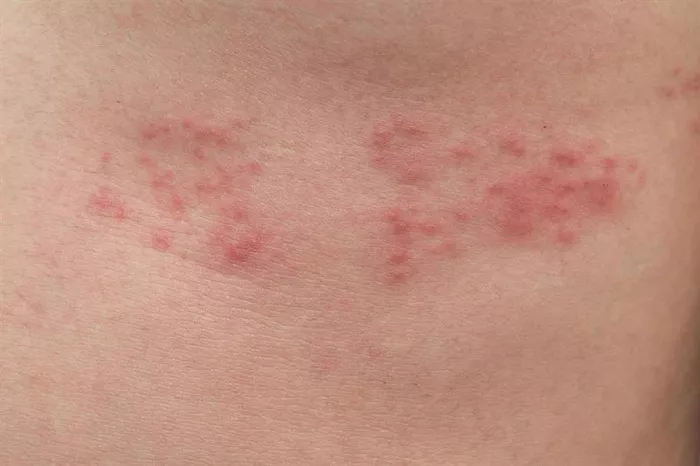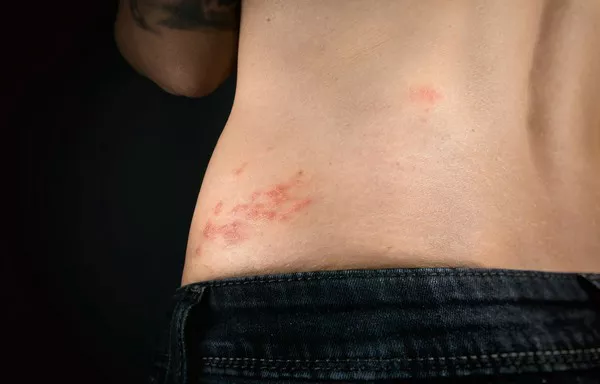Postherpetic Neuralgia (PHN) is a condition that can develop after a person has had shingles, which is caused by the varicella-zoster virus (the same virus that causes chickenpox). After the shingles rash heals, some people may experience persistent pain in the affected areas, even though the rash itself is gone. This pain is called postherpetic neuralgia, and it can last for months or even years. In this article, we will explore how long PHN typically lasts, what factors affect its duration, and how it can be managed.
What Is Postherpetic Neuralgia?
Postherpetic neuralgia occurs when nerve fibers are damaged by the shingles virus. The varicella-zoster virus can remain dormant in the body after a person recovers from chickenpox. Later in life, the virus can reactivate as shingles, typically causing a painful, blistering rash. Once the rash heals, some individuals continue to experience severe pain in the area where the rash occurred. This ongoing pain is PHN.
PHN is most common in older adults, especially those over 60 years of age. It is also more likely to develop in people who had severe shingles or had shingles on the face or eyes.
How Long Does PHN Last?
The duration of postherpetic neuralgia can vary significantly from person to person. Some individuals experience pain that lasts for only a few months, while others may deal with it for years. On average, PHN lasts between 3 to 6 months, but some cases can persist for much longer. In rare cases, PHN can become a lifelong issue, severely affecting a person’s quality of life.
Several factors can influence how long PHN lasts, including the severity of the initial shingles infection, the age of the individual, and how quickly they receive treatment for shingles.
Early Intervention and PHN Duration
One of the most important factors in determining how long PHN will last is how quickly a person seeks treatment for shingles. Early treatment with antiviral medications, such as acyclovir, valacyclovir, or famciclovir, can help reduce the severity of the shingles outbreak and, in some cases, decrease the risk of developing PHN.
If a person receives antiviral treatment within the first 72 hours of noticing the shingles rash, the chances of developing postherpetic neuralgia may be reduced. Antiviral medications work by limiting the virus’s ability to replicate, which can help reduce nerve damage. Starting treatment early also helps reduce the overall intensity of pain during the acute phase of shingles, which may influence how long the PHN lasts.
However, even with antiviral treatment, some individuals may still develop PHN, especially if they are older or have weakened immune systems.
Risk Factors That Affect PHN Duration
Several risk factors can increase the likelihood that someone will experience long-term PHN. These factors also affect how long the pain will last.
Age
The older a person is, the higher their risk of developing PHN. Older adults, especially those over the age of 60, tend to have a weaker immune system, which means their body has a harder time fighting off the virus. As a result, older individuals are more likely to experience prolonged pain after a shingles outbreak. The risk of PHN increases with each decade of life.
Severity of the Shingles Rash
People who experience severe pain or a large, widespread rash during their shingles infection are more likely to develop PHN. If the shingles rash involves the face or eyes, the risk of developing PHN is also higher. The more severe the shingles infection, the greater the nerve damage, which can contribute to longer-lasting pain.
Weakened Immune System
Individuals with weakened immune systems, such as those undergoing chemotherapy, taking immunosuppressive medications, or living with conditions like HIV/AIDS, are at a higher risk of developing PHN. A weakened immune system makes it more difficult for the body to fight off the virus and recover from shingles, leading to prolonged pain.
Other Health Conditions
Certain health conditions, such as diabetes or heart disease, can increase the risk of developing PHN. Diabetes, in particular, can damage nerves and interfere with the body’s ability to heal, which may contribute to prolonged pain after a shingles infection.
How Pain from PHN Affects Patients
The pain associated with PHN can vary in intensity and type. Some people experience a constant, aching pain, while others have sharp, stabbing, or burning sensations. The pain can range from mild to debilitating, and it often worsens at night. PHN pain is usually localized to the area where the shingles rash occurred, but in some cases, it may spread to other parts of the body.
The pain can significantly impact a person’s quality of life. Everyday activities such as sleeping, eating, and dressing may become difficult due to the discomfort. In some cases, people with PHN may also experience emotional distress, including anxiety and depression, due to the persistent pain.
Can PHN Be Prevented?
While there is no surefire way to prevent PHN, getting vaccinated against shingles can reduce the risk of developing the condition. The shingles vaccine, called Shingrix, is recommended for adults aged 50 and older, even if they have had shingles in the past. The vaccine can help prevent the reactivation of the varicella-zoster virus, thereby lowering the risk of both shingles and postherpetic neuralgia.
If you have had shingles, getting the Shingrix vaccine after your recovery may help reduce the chances of developing PHN in the future.
Treatment Options for PHN
While there is no cure for postherpetic neuralgia, several treatment options can help manage the pain and potentially shorten its duration.
Pain Medications
Pain management is one of the main focuses of PHN treatment. Doctors may prescribe various types of medications to help control pain, such as:
Antidepressants: Certain antidepressants, such as amitriptyline or nortriptyline, can help relieve nerve pain by affecting the brain’s chemical pathways.
Anticonvulsants: Medications like gabapentin or pregabalin can reduce nerve-related pain by calming overactive nerve signals.
Topical treatments: Capsaicin cream, lidocaine patches, and other topical treatments may provide relief for localized pain.
Opioids: In severe cases, doctors may prescribe opioid medications to manage intense pain. However, these are typically used as a last resort due to their potential for addiction and side effects.
Nerve Blocks and Injections
For some patients, nerve blocks or steroid injections may help alleviate pain. These treatments involve injecting anesthetic or anti-inflammatory medication directly into the affected nerves. While not a permanent solution, they can provide temporary relief from pain.
Physical Therapy
Physical therapy may be recommended to help improve mobility and reduce the impact of chronic pain. Exercises that strengthen muscles and improve circulation can sometimes help alleviate pain caused by PHN.
How Long Does PHN Last in Different People?
As mentioned earlier, PHN can last anywhere from a few months to several years, depending on the individual and the factors involved. The average duration is about 3 to 6 months. However, it is important to note that PHN is highly variable, and while some people experience only mild discomfort, others may deal with severe pain for much longer.
For most people, the pain from PHN gradually decreases over time. However, for those who experience long-term pain, the condition may become a chronic issue, requiring ongoing management.
Conclusion
Postherpetic neuralgia can last for weeks, months, or even years, depending on various factors such as age, the severity of the shingles infection, and how quickly treatment is started. Early intervention with antiviral medications can reduce the risk of developing PHN, but even with treatment, some individuals may still experience persistent pain. Managing PHN typically involves pain medications, physical therapy, and other treatments to reduce discomfort. Although PHN can be challenging to live with, many people find ways to manage the pain and lead normal lives. If you are experiencing PHN, it is important to consult with a healthcare provider to find the most effective treatment plan for your situation.
Related topics:


























